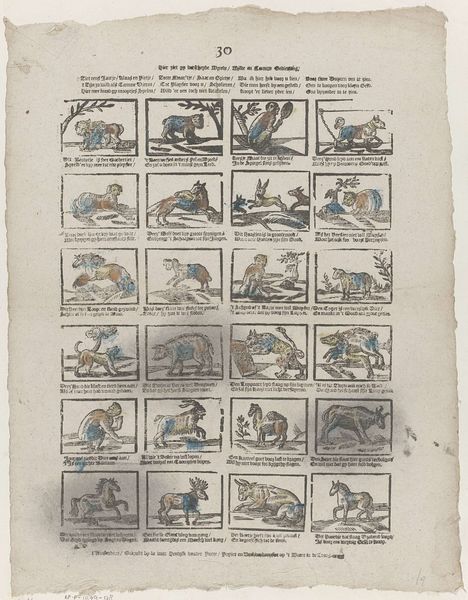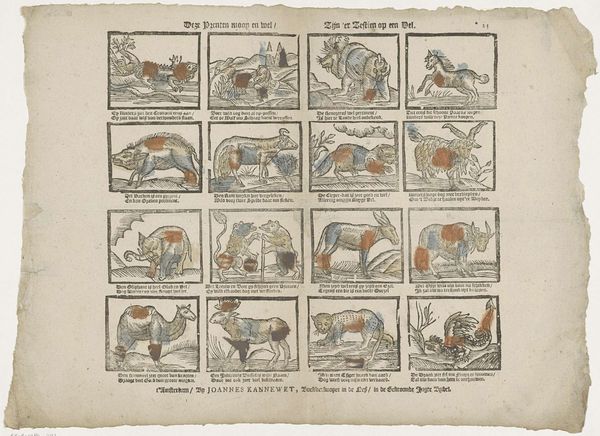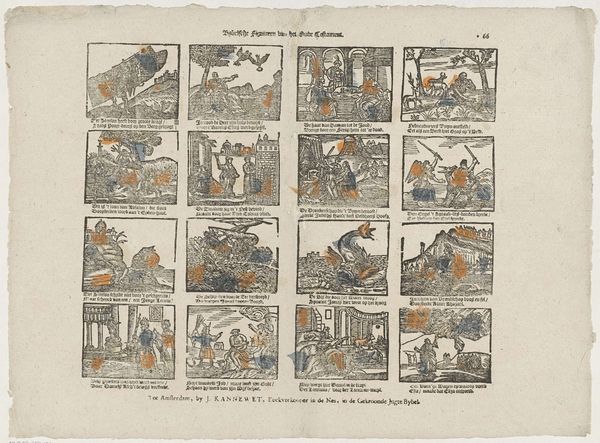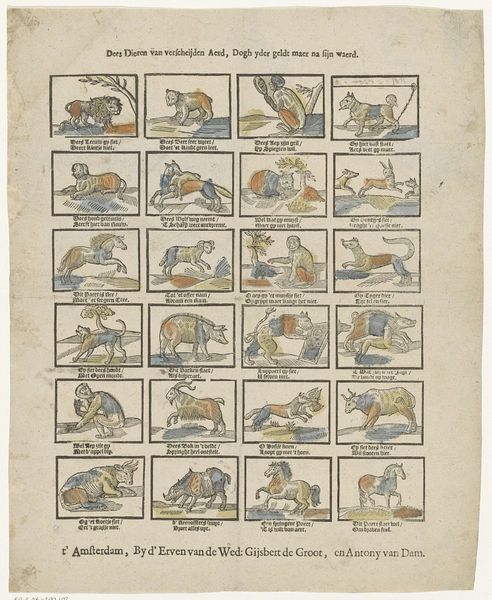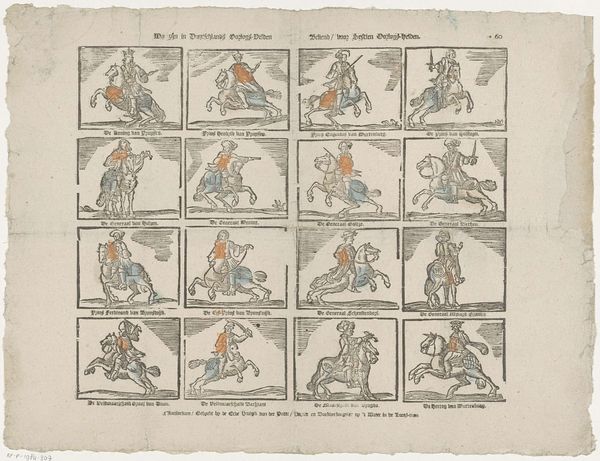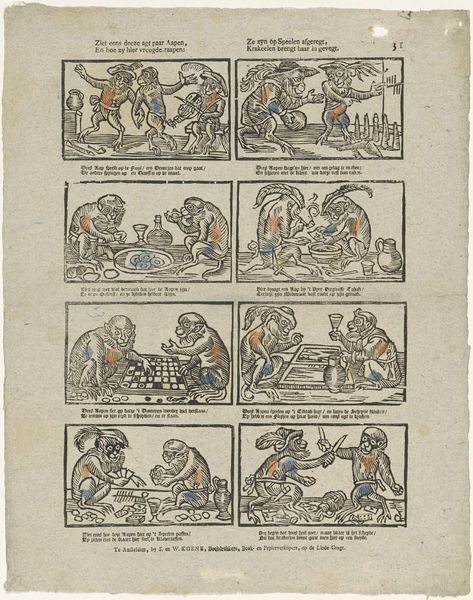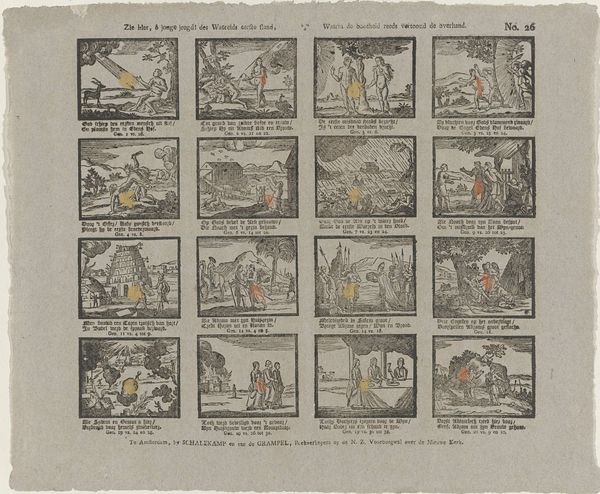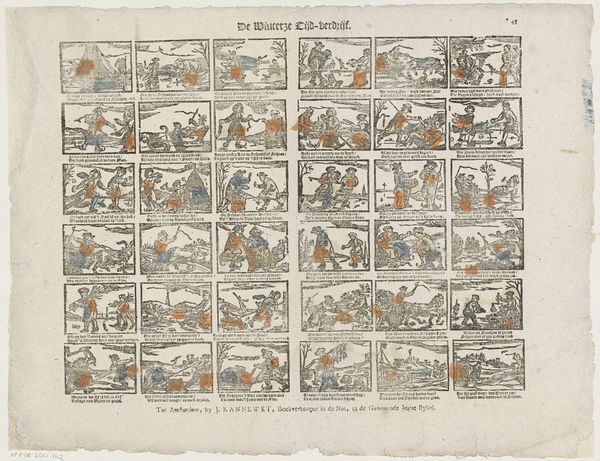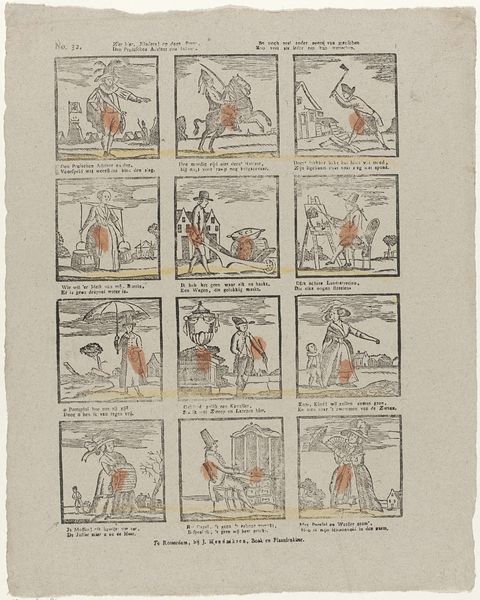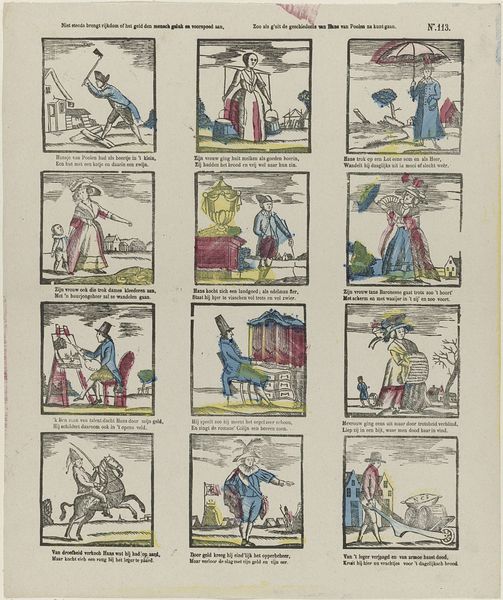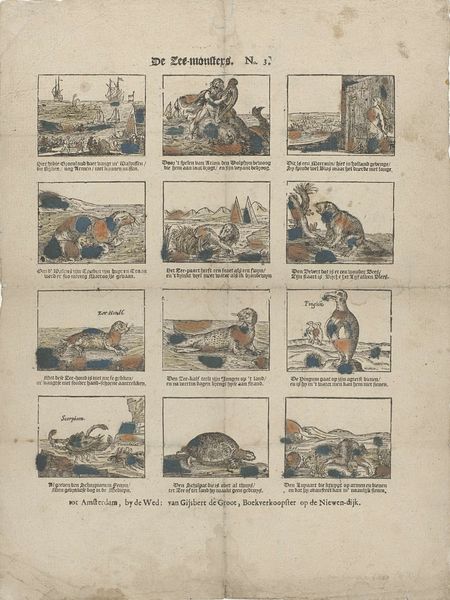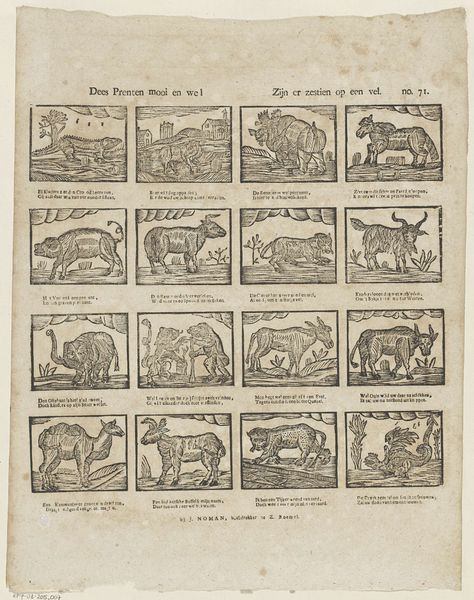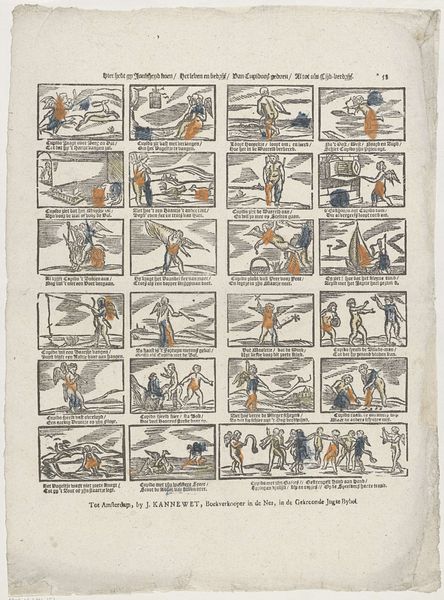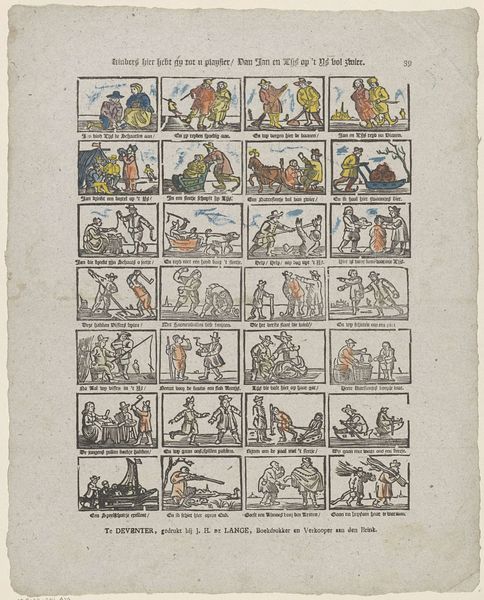
Deze prenten mooy en wel / Zijn 'er zestien op een vel 1725 - 1780
0:00
0:00
print, engraving
# print
#
figuration
#
genre-painting
#
engraving
Dimensions: height 301 mm, width 340 mm
Copyright: Rijks Museum: Open Domain
Curator: Here we have "Deze prenten mooy en wel / Zijn 'er zestien op een vel," which loosely translates to "These prints are beautiful and good / There are sixteen on a sheet." It's an engraving, likely dating from 1725 to 1780, made by Johannes (II) Kannewet, a Dutch bookseller and printmaker. Editor: Sixteen little windows into a bestiary! Each tiny frame seems to hold a slightly bewildered animal, posed for posterity. There’s something almost endearingly naive about the way they’re rendered. A dragon-rooster, you say? Splendid! Curator: There’s a clear emphasis on the printmaking process here, isn’t there? Look at the even, controlled lines of the engraving itself and the evidence of the printing press used to transfer these images, en masse, to paper for consumption. This isn’t some precious, unique work, but something explicitly reproducible. And don't you think that even the occasional splotch of added color adds to the character and value of this relatively mass-produced artwork? Editor: Absolutely! The little splashes of color elevate the experience; it is more than just a printed reproduction but an individually-accented expression of care from the printmaker. It lends a warmth, a sense of playful intention, to what might otherwise feel strictly functional. They transform these panels from mere illustrations into delightful portals—windows into the fantastical. Curator: I’m drawn to thinking about who consumed prints like these and what purpose they served. Were they purely decorative, tacked up on walls? Educational tools showcasing exotic creatures? Or perhaps a form of proto-zoological research? It would be useful to more deeply consider what the making process looked like for everyday artists making such prints. Editor: Maybe all of the above! Perhaps in a time of slower news and expensive art, images such as these, quickly disseminated in a reproducible form, were valuable for simply bringing novelty into people’s lives, a little portal into new worlds from Johannes’ publishing house! What better materialization of curiosity is there?
Comments
No comments
Be the first to comment and join the conversation on the ultimate creative platform.
